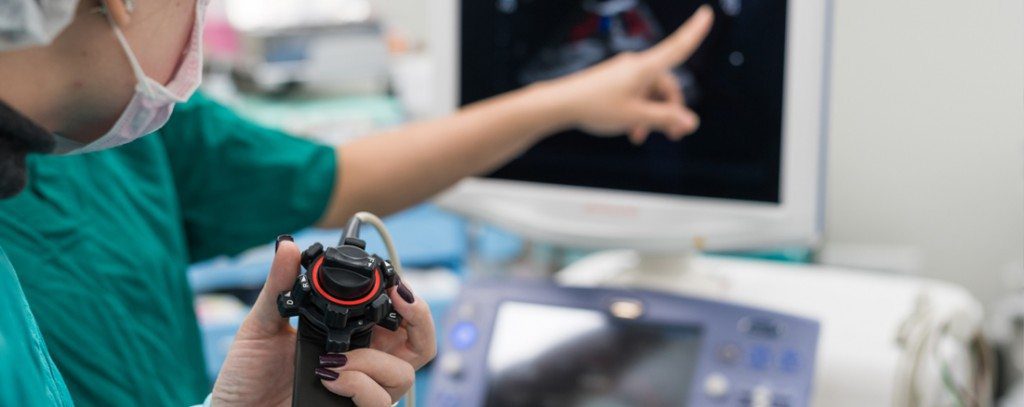
What is it?
Upper GI endoscopy, which is sometimes called esophagogastroduodenoscopy (EGD), uses a lighted, flexible, fiber-optic endoscope to view and examine the upper intestinal tract. The upper GI tract includes the mouth, esophagus, and stomach. The stomach secretes potent acid and breaks food into small particles. These particles enter the small bowel where bile from the liver and digestive fluid from the pancreas aid in the digestive process.
How is it Done?
Prior to the procedure, you’ll be given a sedative via an IV to relax you, reduce the gag reflex, and cause short-term amnesia. Some people may need to be deeply sedated so they are completely asleep. The endoscope is then gently inserted into the upper esophagus.
Upper GI Endoscopy Procedure Video
This procedure is used to examine the lining of the esophagus, stomach, and upper duodenum for inflammation, ulcers, or growths. It can rule out disorders such as acid reflux or hiatal hernia. The physician uses a small camera, called an endoscope, which is inserted into the mouth and guided down the throat. The examination usually lasts from 5 to 20 minutes.
Why is it done?
The upper GI tract can be host to many disorders because of a variety of issues related to what we eat, the environment, genetics, and infection. Upper GI endoscopy helps diagnose and often treat the following conditions:
- Stomach and esophageal tumors
- Difficulty swallowing
- Pain in the upper abdomen
- Indigestion
- Ulcers
- Intestinal bleeding
- Heartburn
- Gastritis (inflamed stomach lining)